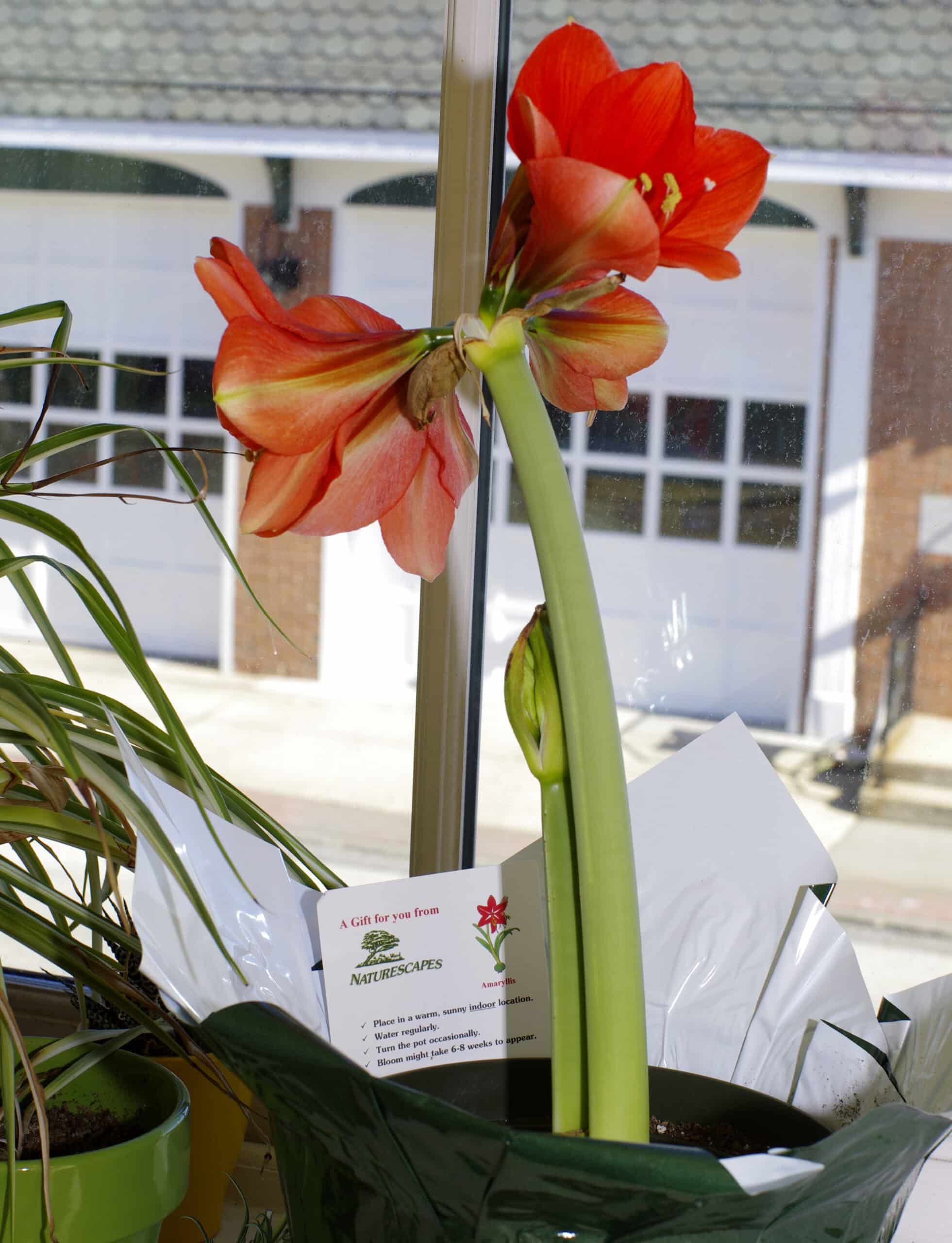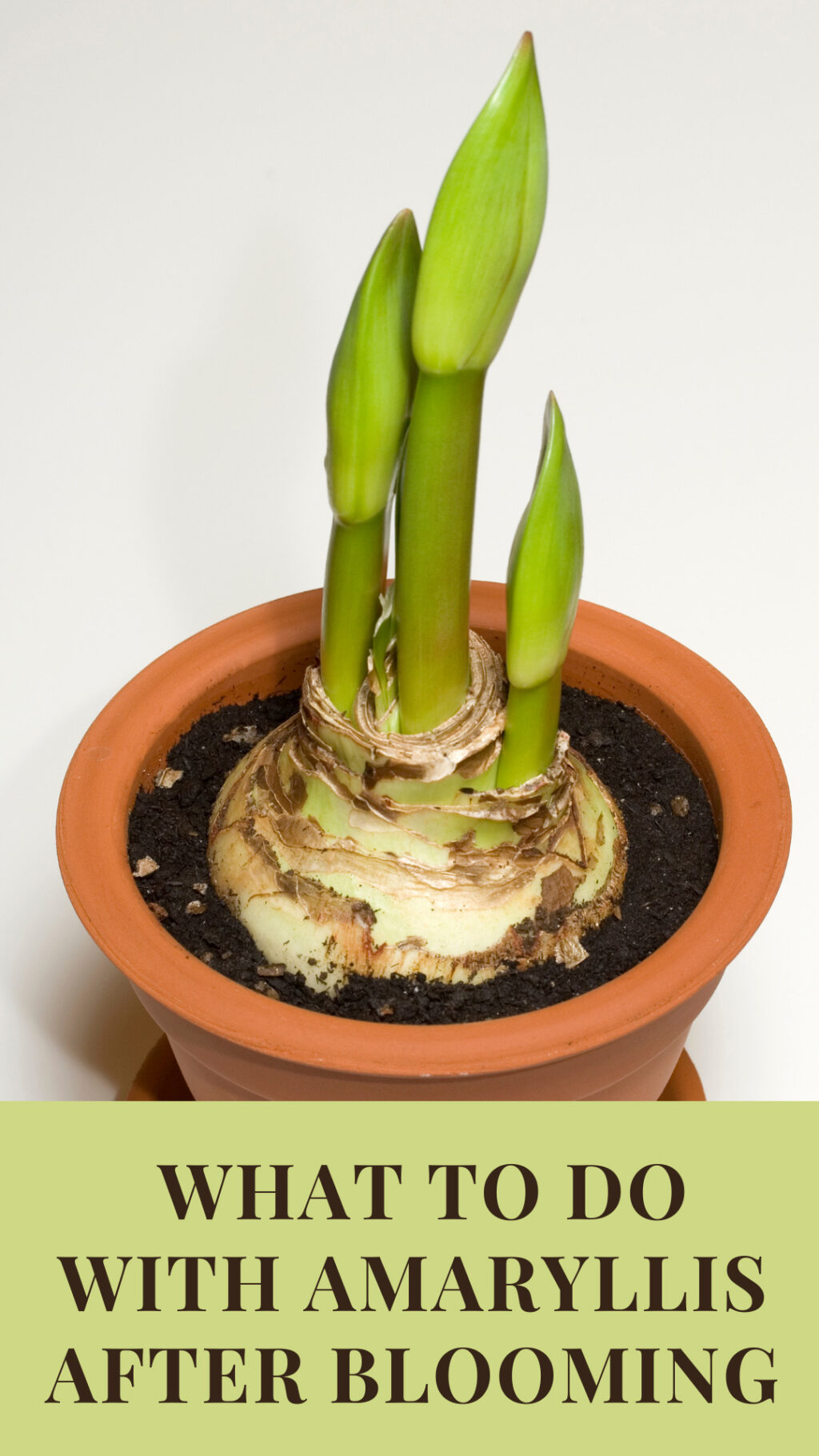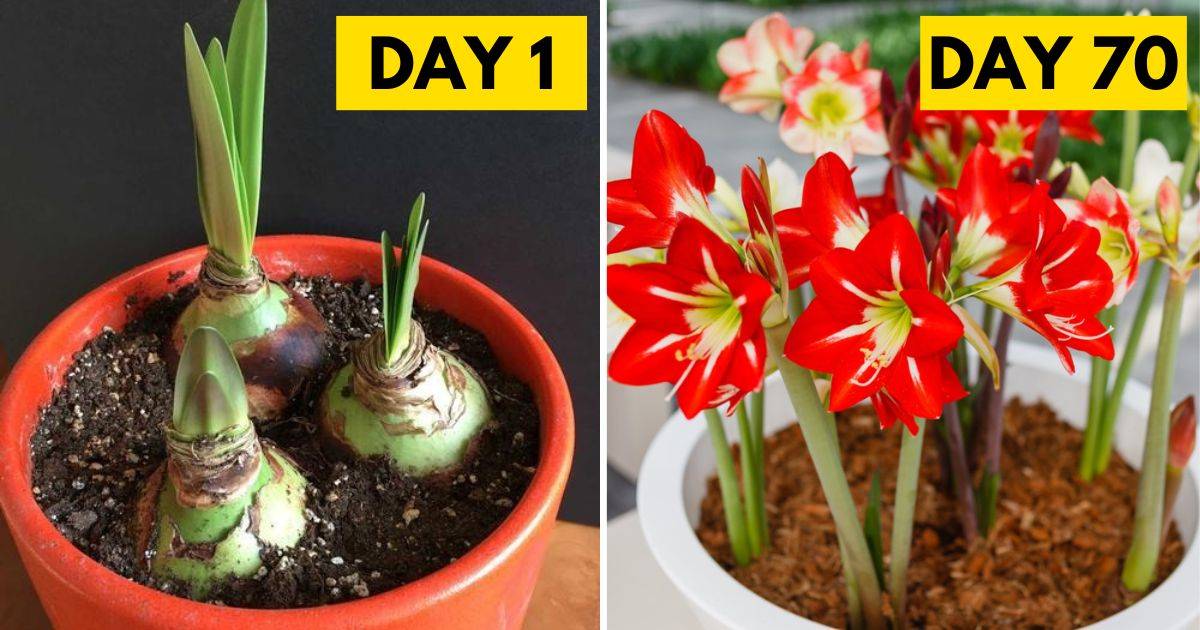Understanding the Amaryllis Life Cycle: What Happens After Blooming
The amaryllis plant is a popular choice among gardeners and flower enthusiasts due to its large, showy blooms and relatively low-maintenance care. However, many people are unsure of what to do with their amaryllis after it has finished blooming. To provide the best possible care for your amaryllis, it’s essential to understand its life cycle and the changes it undergoes after blooming.
After an amaryllis plant has finished blooming, it enters a period of dormancy, during which the bulb recharges its energy reserves. This period is crucial for the plant’s survival and future blooming. During this time, the leaves may turn yellow and die back, which can be a natural process. However, it’s essential to continue providing your amaryllis with proper care, including watering, fertilizing, and pruning, to ensure it remains healthy and thrives.
Understanding the amaryllis life cycle is vital for providing the right care at the right time. By recognizing the different stages of growth and development, you can take the necessary steps to promote healthy growth, encourage blooming, and address any potential problems that may arise. Whether you’re a seasoned gardener or a beginner, knowing what to do with your amaryllis after blooming is crucial for enjoying its beautiful blooms for years to come.
So, what to do with amaryllis after blooming? The answer lies in understanding the plant’s life cycle and providing the necessary care to promote healthy growth and encourage future blooming. By following the right steps and techniques, you can enjoy your amaryllis for years to come and appreciate its stunning blooms.
Cutting Back the Flower Stalk: How to Prune Your Amaryllis
After an amaryllis plant has finished blooming, it’s essential to cut back the flower stalk to encourage new growth and promote future blooming. Pruning the flower stalk is a simple process that requires the right tools and a bit of knowledge. To prune your amaryllis, you’ll need a pair of clean, sharp scissors or pruning shears.
The ideal time to prune the flower stalk is after the blooms have faded and the stalk has turned yellow or brown. Cut the stalk back to within an inch or two of the bulb, making sure to leave as much of the foliage as possible. This will help the plant conserve energy and promote new growth.
When pruning the flower stalk, it’s essential to make clean cuts just above a node, which is the point where a leaf meets the stem. This will help the plant heal quickly and reduce the risk of disease. It’s also important to remove any dead or dying leaves or stems to prevent the spread of disease and encourage healthy growth.
Pruning the flower stalk is a crucial step in post-bloom care for an amaryllis plant. By cutting back the stalk, you’ll be encouraging the plant to focus its energy on producing new growth and promoting future blooming. This is especially important if you want to know what to do with amaryllis after blooming to keep it thriving.
Some common mistakes to avoid when pruning the flower stalk include cutting too much of the foliage, which can weaken the plant, and not making clean cuts, which can lead to disease. By following the proper pruning techniques, you’ll be able to keep your amaryllis plant healthy and thriving, and enjoy its beautiful blooms for years to come.
Providing Optimal Conditions: Lighting, Watering, and Fertilizing Your Amaryllis
After the blooming period, it’s essential to provide your amaryllis with the right conditions to promote healthy growth and encourage another blooming cycle. Understanding what to do with amaryllis after blooming is crucial for its long-term care. One of the most critical factors is lighting. Amaryllis plants prefer bright, indirect light, but direct sunlight can cause the leaves to become scorched. Placing your amaryllis near an east- or west-facing window is ideal. If this isn’t possible, you can also use grow lights to supplement the natural light.
Watering is another critical aspect of post-bloom care. Allow the soil to dry slightly between waterings, but make sure not to overwater. Overwatering can lead to root rot, which can be fatal to your amaryllis. Check the soil moisture by sticking your finger into the soil up to the first knuckle. If the soil feels dry, it’s time to water. Water your amaryllis thoroughly, making sure the pot drains well to prevent waterlogged soil.
Fertilizing your amaryllis is also essential for promoting healthy growth. Use a balanced, water-soluble fertilizer (20-20-20) and dilute it to half the recommended strength. Feed your amaryllis once a month, but avoid fertilizing during the dormant phase. You can also use a high-phosphorus fertilizer (10-20-10) to promote blooming, but this should be done sparingly and only during the growing season.
In addition to lighting, watering, and fertilizing, it’s also important to maintain a consistent temperature. Amaryllis plants prefer daytime temperatures between 65-70°F (18-21°C) and nighttime temperatures around 55-60°F (13-15°C). Avoid placing your amaryllis near heating or cooling vents, fireplaces, or drafty windows.
By providing your amaryllis with the right conditions, you’ll be able to promote healthy growth and encourage another blooming cycle. Remember to adjust these conditions according to the season and your plant’s specific needs. With proper care and attention, you’ll be able to enjoy your amaryllis for years to come.
Repotting Your Amaryllis: When and How to Transplant
After an amaryllis plant has finished blooming, it’s essential to consider repotting it to provide fresh potting mix and a larger pot. This process can help promote healthy growth and encourage another blooming cycle. Knowing what to do with amaryllis after blooming is crucial, and repotting is a vital step in the process.
The ideal time to repot an amaryllis is after it has finished blooming and the foliage has started to grow. This is usually around 2-3 months after the blooming period. Choose a pot that is only slightly larger than the original one, as amaryllis plants prefer to be slightly root-bound. A pot that is too large can cause the soil to become too wet, leading to root rot.
To repot your amaryllis, start by gently removing the plant from its pot. Take care not to damage the roots or disturb the soil. Inspect the roots and trim any dead or damaged roots with sterile scissors or pruning shears. This will help prevent the spread of disease and encourage healthy growth.
Next, prepare the new pot by adding a layer of fresh potting mix. A well-draining potting mix specifically designed for bulbs is ideal. Place the amaryllis plant in the new pot, making sure the bulb is at the same depth as it was in the original pot. Add more potting mix around the roots, gently firming it in place as you go. Water the plant thoroughly after repotting to settle the soil.
After repotting, it’s essential to provide your amaryllis with the right conditions to promote healthy growth. This includes adjusting the lighting, watering, and fertilizing conditions. By providing your amaryllis with the right care, you’ll be able to encourage another blooming cycle and enjoy your plant for years to come.
Some benefits of repotting an amaryllis plant include:
- Fresh potting mix provides essential nutrients for healthy growth
- A larger pot allows for more room for the roots to grow
- Repotting can help prevent the soil from becoming too wet and reducing the risk of root rot
- Repotting can encourage another blooming cycle
By following these steps and providing your amaryllis with the right care, you’ll be able to enjoy your plant for years to come.
Encouraging New Growth: How to Stimulate Your Amaryllis to Bloom Again
After an amaryllis plant has finished blooming, it’s essential to provide the right conditions to encourage new growth and stimulate another blooming cycle. Understanding what to do with amaryllis after blooming is crucial for promoting healthy growth and encouraging another bloom. Several factors influence an amaryllis plant’s ability to bloom again, including temperature, light, and fertilization.
Temperature is a critical factor in encouraging new growth and stimulating another blooming cycle. Amaryllis plants prefer daytime temperatures between 65-70°F (18-21°C) and nighttime temperatures around 55-60°F (13-15°C). Avoid placing your amaryllis near heating or cooling vents, fireplaces, or drafty windows, as this can cause temperature fluctuations that may hinder growth.
Light is also essential for promoting healthy growth and encouraging another blooming cycle. Amaryllis plants prefer bright, indirect light, but direct sunlight can cause the leaves to become scorched. Placing your amaryllis near an east- or west-facing window is ideal. If this isn’t possible, you can also use grow lights to supplement the natural light.
Fertilization is another critical factor in encouraging new growth and stimulating another blooming cycle. Use a balanced, water-soluble fertilizer (20-20-20) and dilute it to half the recommended strength. Feed your amaryllis once a month, but avoid fertilizing during the dormant phase. You can also use a high-phosphorus fertilizer (10-20-10) to promote blooming, but this should be done sparingly and only during the growing season.
In addition to temperature, light, and fertilization, it’s also essential to provide your amaryllis with adequate water and humidity. Water your amaryllis thoroughly, making sure the pot drains well to prevent waterlogged soil. You can also place the pot on a tray filled with water and pebbles to increase the humidity around the plant.
Some tips to encourage new growth and stimulate another blooming cycle include:
- Providing a period of cooler temperatures (around 50-60°F or 10-15°C) for 30-60 days to induce dormancy
- Pruning the flower stalk after blooming to encourage new growth
- Repotting the amaryllis in fresh potting mix and a larger pot to provide more room for the roots to grow
- Avoiding overwatering, which can lead to root rot and hinder growth
By providing your amaryllis with the right conditions and following these tips, you’ll be able to encourage new growth and stimulate another blooming cycle. With proper care and attention, you’ll be able to enjoy your amaryllis for years to come.
Common Problems and Solutions: Troubleshooting Your Amaryllis After Blooming
After an amaryllis plant has finished blooming, it’s not uncommon to encounter some common problems that can affect its health and ability to bloom again. Understanding what to do with amaryllis after blooming is crucial for identifying and addressing these issues. In this section, we’ll discuss some common problems that may arise and provide solutions and troubleshooting tips to address them.
One common problem that may occur after an amaryllis plant has bloomed is droopy leaves. This can be caused by a variety of factors, including overwatering, underwatering, or exposure to extreme temperatures. To address this issue, check the soil moisture and adjust your watering schedule accordingly. Make sure the pot drains well to prevent waterlogged soil, and avoid exposing the plant to extreme temperatures.
Another common problem that may arise is a lack of new growth. This can be caused by a lack of nutrients, inadequate light, or insufficient water. To address this issue, fertilize your amaryllis with a balanced, water-soluble fertilizer (20-20-20) and adjust your watering schedule to ensure the plant is receiving enough moisture. Also, make sure the plant is receiving sufficient light, but avoid direct sunlight which can cause the leaves to become scorched.
Other common problems that may occur after an amaryllis plant has bloomed include:
- Yellowing leaves: This can be caused by overwatering, underwatering, or exposure to extreme temperatures. Adjust your watering schedule and ensure the plant is receiving sufficient light.
- Leaf drop: This can be caused by a lack of nutrients, inadequate light, or insufficient water. Fertilize your amaryllis and adjust your watering schedule to ensure the plant is receiving enough moisture.
- Pests: Check your plant regularly for pests such as mealybugs, spider mites, and scale. If you find any, treat the plant with insecticidal soap or neem oil.
To prevent these common problems from occurring, it’s essential to provide your amaryllis with proper care and attention. This includes:
- Watering carefully: Avoid overwatering or underwatering, and make sure the pot drains well to prevent waterlogged soil.
- Fertilizing regularly: Use a balanced, water-soluble fertilizer (20-20-20) and fertilize your amaryllis once a month.
- Providing sufficient light: Make sure the plant is receiving sufficient light, but avoid direct sunlight which can cause the leaves to become scorched.
- Monitoring temperature: Avoid exposing the plant to extreme temperatures, and keep it in a room with a consistent temperature between 65-70°F (18-21°C).
By following these tips and troubleshooting common problems, you’ll be able to keep your amaryllis healthy and thriving, and encourage it to bloom again.
Long-Term Care: How to Keep Your Amaryllis Thriving Year-Round
Providing long-term care for an amaryllis plant is essential for keeping it thriving year-round. Understanding what to do with amaryllis after blooming is crucial for promoting healthy growth and encouraging another blooming cycle. In this section, we’ll discuss the importance of regular maintenance tasks and seasonal adjustments for keeping your amaryllis thriving.
Regular Maintenance Tasks:
- Watering: Water your amaryllis plant regularly, but make sure the pot drains well to prevent waterlogged soil.
- Fertilizing: Fertilize your amaryllis plant once a month with a balanced, water-soluble fertilizer (20-20-20).
- Pruning: Prune your amaryllis plant regularly to encourage new growth and prevent the plant from becoming leggy.
- Pest control: Check your plant regularly for pests such as mealybugs, spider mites, and scale. If you find any, treat the plant with insecticidal soap or neem oil.
Seasonal Adjustments:
- Spring: In the spring, increase the frequency of watering and fertilizing to promote new growth.
- Summer: In the summer, provide your amaryllis plant with bright, indirect light and maintain a consistent temperature between 65-70°F (18-21°C).
- Autumn: In the autumn, reduce the frequency of watering and fertilizing to prepare the plant for the dormant phase.
- Winter: In the winter, provide your amaryllis plant with cooler temperatures (around 50-60°F or 10-15°C) and reduced watering to induce dormancy.
Additional Tips:
- Repot your amaryllis plant every 2-3 years to provide fresh potting mix and a larger pot.
- Monitor your plant’s temperature and humidity levels to ensure they are within the optimal range.
- Provide your amaryllis plant with support to prevent the stem from becoming top-heavy and breaking.
By following these long-term care tips and making seasonal adjustments, you’ll be able to keep your amaryllis plant thriving year-round and encourage it to bloom again. With proper care and attention, you’ll be able to enjoy your amaryllis for years to come.
Conclusion: Enjoying Your Amaryllis for Years to Come
With proper post-bloom care, you can enjoy your amaryllis plant for years to come. Understanding what to do with amaryllis after blooming is crucial for promoting healthy growth and encouraging another blooming cycle. By following the steps outlined in this article, you’ll be able to provide your amaryllis with the right conditions to thrive.
In summary, the key takeaways from this article are:
- Understand the natural life cycle of an amaryllis plant, including the blooming period and the subsequent dormant phase.
- Cut back the flower stalk after blooming to encourage new growth.
- Provide optimal conditions, including lighting, watering, and fertilizing, to promote healthy growth.
- Repot your amaryllis plant after blooming to provide fresh potting mix and a larger pot.
- Encourage new growth and stimulate another blooming cycle by adjusting temperature, light, and fertilization.
- Identify and address common problems that may arise after blooming, such as droopy leaves or lack of new growth.
- Provide long-term care, including regular maintenance tasks and seasonal adjustments, to keep your amaryllis thriving year-round.
By following these steps and providing your amaryllis with proper care and attention, you’ll be able to enjoy your plant for years to come. Remember to be patient and observe your plant’s responses to different conditions, and don’t hesitate to seek advice from a gardening expert if you have any questions or concerns.
With the right care and attention, your amaryllis plant will continue to thrive and provide you with beautiful blooms for years to come. Happy gardening!


:max_bytes(150000):strip_icc()/GettyImages-926182310-3e36477ccddf4a6d9e6220837b02affe.jpg)




